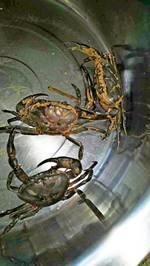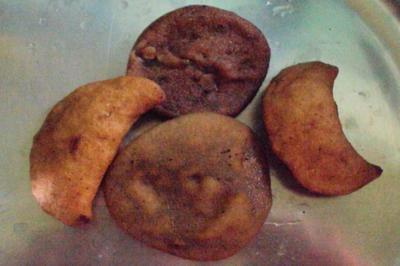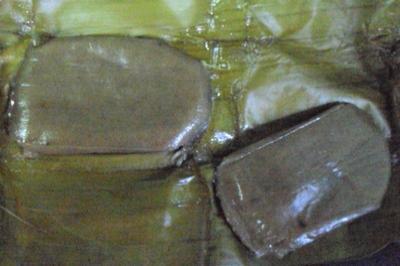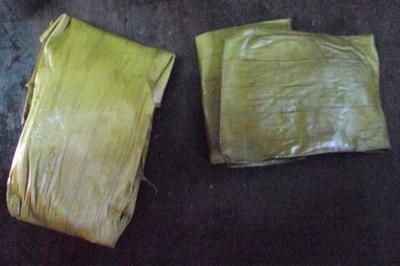The food of Hajongs
Turtle
Turtle and sticky-rice is the chief food of the Hajongs. A song has also been composed long ago with the title ”Turtle meat and sticky-rice”. But since the population of turtle has been decreased now and considered an endangered species, this is not available in the market and thus, the future generation have less chance to taste it.
Snail
River or paddy snail is also eaten by Hajongs. There are two types of snails. One with oval shaped and another with pointed shaped. Pointed shaped is liked by most Hajongs. It is also found in ponds and streams.
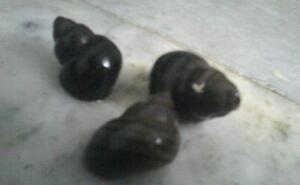
Oyster
This is another species hardly available.

Crab
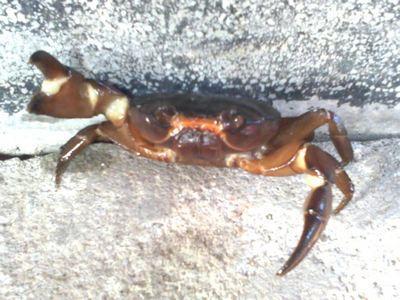
Grinded-curry
This curry is prepared just with rice flour and water. Sometimes tiny fishes are also added.
Soda-curry
This curry is prepared with long gourd, masmelon, yam, bamboo shoot, dried fish, etc., by putting traditional sodium bicarbonate. Traditional sodium bicarbonate is made from banana tree. The banana tree is open and sliced. Then it is dried in the sun and burned in the fire. Then the ashes are collected and mixed with water which is then filtered. The filtered water is the traditional sodium bicarbonate.
Ding-pora
This is a steamed food. Sticky-rice is put inside a special green bamboo and it is placed directly in the fire. Once the burning is over the bamboo is sliced open and the sticky-rice can be eaten with tea or milk. It can ke kept for a few days or even a week, but it is best to eat on the first day or two. Sometimes it becomes hard if kept for a few days, yet can be eaten after warming it, but looses the taste.

Bread
Pat pithâ, batul pithâ aro tel pithâ are common among Hajongs. These are prepared during the festival called pusnâ. Pat pithâ- the sticky rice or rice flour is steamed in banana leaves. The juice from a coconut-like fruit called tal is extracted and mixed with the sticky rice or rice flour along with banana and water. When it is gummy, it is wrapped in banana leaf and placed in the frying vessel. Then the vessel is placed on top of the pitcher where the water is boiling. Batul pithâ is round and slightly smaller the size of an egg. It is also steamed like pat pithâ on the frying vessel. Tel pithâ is prepared with an oil. Rice flour is mixed with water to make it gummy and fried till it become brown or light red in colour.
